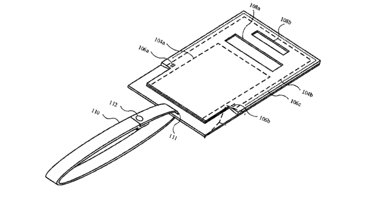Intel shows off 32nm chip, offers update on Penryn, Nehalem
Presenting at its Intel Developer Forum in San Francisco on Tuesday, Intel Corp. demonstrated the industry's first 32-nanometer (nm) chip and also offered a status update on its upcoming "Penryn" family of processors and next-generation "Nehalem" architecture.
"Our tick-tock strategy of alternating next generation silicon technology and a new microprocessor architecture — year after year — is accelerating the pace of innovation in the industry," said Otellini. "Tick-tock is the engine creating today's most advanced technologies and keeps them coming out at a rapid cadence. Our customers and computer users around the world can count on Intel's innovation engine and manufacturing capability to deliver state-of-the-art performance that rapidly becomes mainstream."
Penryn
When Intel introduces Penryn in a few weeks, it will be the world's first high-volume 45nm processor, the company said. Along with the Silverthorne family of 45nm processors due next year, Penryn will have the small feature size, low-power requirements and high-performance capabilities to meet a wide variety of computing needs from handheld Internet computers to high-end servers.
Intel, which already claims to have achieved more than 750 design wins for the Penryn processor, plans to quickly ramp the technology, introducing 15 new 45nm processors by the end of the year and another 20 in the first quarter of 2008.
"We expect our Penryn processors to provide up to a 20 percent performance increase while improving energy efficiency," he said. "Intel's breakthrough 45nm silicon process technology allows us to provide low-cost, extremely low-power processors for innovative small form factor devices while delivering high-performance, multi-core, multi-featured processors used in the most advanced systems."
Otellini also announced that Intel's 45nm processors and 65nm chipsets would use halogen-free packaging technology beginning next year, yielding chips that will not only be more energy efficient but also better for the environment.
Nehalem
Looking to 2008, the Intel chief also conducted the first public demonstration of Intel's Nehalem processor and said the company is on track to deliver the new processor design in the second half of the year.
The Nehalem architecture was conceived with the company's leadership in performance-per-watt in mind, and will give way to the first chip to utilize Intel's QuickPath Interconnect system architecture, which includes integrated memory controller technology and improved communication links between system components to significantly improve overall system performance.
"Nehalem is an entirely new architecture that leverages Intel's Core Microarchitecture, bringing leading-edge performance advantages, power efficiency and important new server features to market just a year after Intel leads the industry to 45nm technology," said Otellini.
32nm technology
Describing other advanced Intel technologies destined to quickly come to market, Otellini showed the world's first 300mm wafer built using next-generation 32nm process technology. The development of advanced test chips serves as a critical milestone in the company's march toward high-volume manufacturing of 32nm process technology, which it plans for 2009.
Intel's 32nm test chips incorporate logic and memory (static random access memory — SRAM) to house more than 1.9 billion transistors, Otellini said. The 32nm process also uses the company's second-generation high-k and metal gate transistor technology.
This additional performance made possible by Intel's push to drive chip design and manufacturing technology forward will not only be seen in computing, but will enable more true-to-life entertainment and realistic graphics capabilities. As a result, the company said it will be placing increased emphasis on using the power of its processors to enhance key technologies such as visual computing and graphics.
"Satisfying demand for ever-greater computer performance increases means we need to move rapidly to the next manufacturing technology." said Otellini. "Intel engineers and researchers deserve a great deal of credit for setting the pace for the industry. As our advanced technology reaches consumers and businesses in the next couple of years the amount of computing power they'll be able to harness will help them become even more productive, creative and innovative."
25 watt Penryn
During his presentation, Otellini also announced that a version of a Penryn dual-core processor operating at 25 watts will be available on the upcoming Montevina platform, which will include Intel's mobile WiMAX silicon. He said several equipment manufacturers are already planning to introduce Montevina-based notebook PCs starting next year when the platform is introduced.
 Prince McLean
Prince McLean










 Wesley Hilliard
Wesley Hilliard
 Malcolm Owen
Malcolm Owen


 William Gallagher
William Gallagher

 Christine McKee
Christine McKee
 David Schloss
David Schloss






